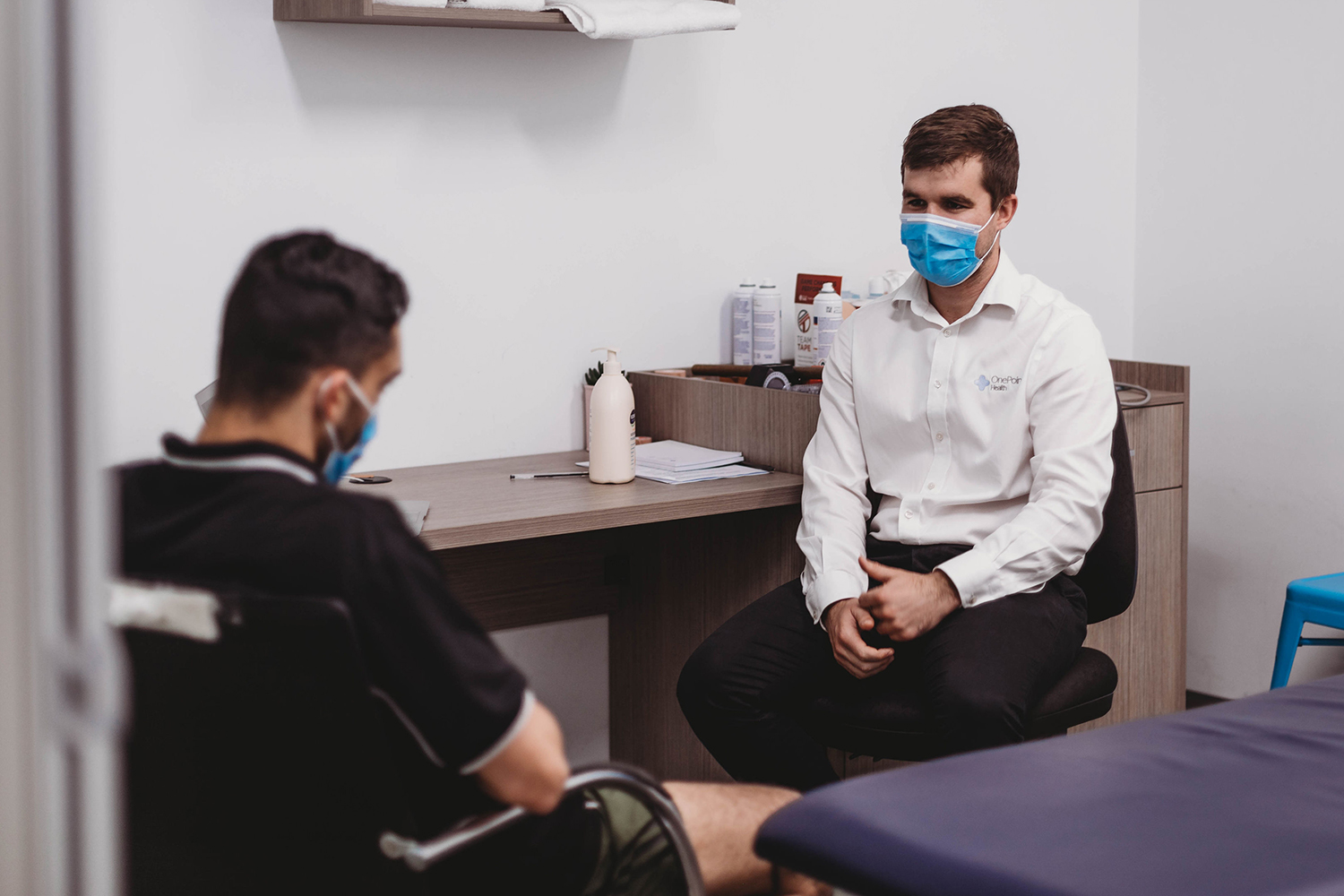From mild to debilitating, headaches can significantly impact quality of life. Learning to manage headaches involves identifying triggers, accessing proper medical care, and lifestyle changes.
What Are Headaches?
Headaches are a common condition characterised by pain in any part of the head. They can affect anyone regardless of age or gender and are usually not a cause for concern. However, in rare cases, they can be a symptom of a serious illness.
What are the different types of headaches?
There are many different types of headaches, including tension, migraine, cervicogenic and cluster headaches, each with its own set of symptoms and triggers. Common types of headaches include:
- Tension-type headaches: These are the most common often described as a dull or tight pain on both sides of the head and related to muscle tension.
- Cervicogenic headaches: Originating from the neck, these can be treated with exercises to strengthen neck muscles, improve range of motion, and decrease pain.
- Migraines: Migraines are a neurological condition. They typically involve throbbing pain on one side of the head and may be accompanied by nausea, vomiting, or sensitivity to light and sound.
- Cluster headaches are less common but can be very painful, with attacks occurring in groups and often felt behind one eye.
If you experience sudden, severe headaches or headaches with other concerning symptoms like vomiting, confusion, or vision changes, it’s important to seek medical attention immediately.
Common Symptoms of Headaches
Headaches can manifest in various ways, and the symptoms can depend on the type of headache. Here are some common types of headaches and their associated symptoms:
- Tension-type headache: This is one of the most common forms of headache. The pain is usually on both sides of your head and feels dull or tight. It can last between 30 minutes and 7 days.
- Cervicogenic: Pain on one side of your head or face, a stiff neck, pain around the eyes, pain while coughing or sneezing, headache with certain neck postures or movement, pain in the neck, shoulder, or arm on one side, head pain from certain neck movements or positions.
- Migraine: Migraine is a common health problem where, in addition to headache, you may have one or more other symptoms, such as nausea, vomiting, or sensitivity to light or noise. The pain is usually throbbing on one side of your head and can last hours or days.
- Cluster headache: Cluster headaches are a less common type of headache that can be very painful. They generally occur in groups or ‘clusters’ of attacks. The pain is usually behind one eye and feels stabbing or burning.
Who can be affected by Headaches?
Headaches can affect people of all ages, genders, and backgrounds.
- Headaches are common and can affect males and females of any age.
- Globally, it has been estimated that the prevalence among adults of current headache disorder (symptomatic at least once within the last year) is about 50%.
- Half to three-quarters of adults aged 18–65 years in the world have had a headache in the last year.
- Headache on 15 or more days every month affects 1.7–4% of the world’s adult population.
- Migraines occur in both children and adults but affect adult women three times more often than men.
- People between the ages of 25 and 44 years are more likely to report having a headache.
Diagnosis of Headaches
Physiotherapy assessment for headaches typically involves several steps:
- Subjective Examination: The physiotherapist will ask questions about the nature and origins of the headache to give clues about exactly which joints are involved.
- Medical History: The physiotherapist will ask about your medical history, including the frequency and intensity of your headaches, triggers, and any other symptoms you may have.
- Physical Examination: This includes assessing the range of motion of the head/neck, joint mobility, musculature tightness, tenderness, and trigger points, strength and endurance of the deep neck flexor muscles, strength and endurance of the axioscapular muscles, and posture.
- Headache Diary: Keeping a headache diary can be very helpful. You can track when and how often you get headaches, their intensity, and what might trigger them. This can help your physiotherapist understand your condition better.
- Specific Joint Movements: By carefully assessing the upper neck motion, the physiotherapist can clarify the actual joint and tissues that are the primary cause of the headache.
- Treatment Plan: Based on the assessment, the physiotherapist will create a treatment plan to reduce your symptoms. This may include exercises, massage, and stretching.
How do I Treat Headaches?
Treatment varies depending on the type of headache and its underlying cause but may include pain relief medications, avoiding triggers, and lifestyle changes.
Physiotherapy can be an effective treatment for various types of headaches, including tension-type headaches, migraines, and cervicogenic headaches. Here are some common physiotherapy treatments for headaches:
- Cervical Exercises: These exercises aim to strengthen the muscles of the neck and upper body, increase range of movement, and decrease pain.
- Relaxation Techniques: These techniques help to reduce muscle tension and stress, which can contribute to headaches.
- Soft tissue release: Massage can help to relieve muscle tension and improve circulation, which can help to alleviate headache symptoms.
- Postural Exercises: These exercises aim to improve posture, which can often contribute to the development of headaches.
- Cranio-Cervical Techniques: These techniques involve specific movements and manipulations of the head and neck to alleviate headache symptoms.
- Thermotherapy: The application of heat can help to relax muscles and alleviate tension, which can help to reduce headache symptoms.
- Vertebral Mobilization: This involves the passive movement of specific spinal segments to decrease pain and increase mobility.
- Stretching: Regular stretching can help to alleviate muscle tension and improve flexibility, which can help to prevent headaches.
- Lifestyle Advice: Advice on diet, exercise, sleep, and stress management can also be part of a comprehensive treatment plan for headaches.
- Aerobic Conditioning: Low-impact aerobic exercises have shown benefits in managing migraines.
Remember, the effectiveness of these treatments can vary depending on the individual and the type of headache. It’s important to consult a healthcare professional for a proper diagnosis and treatment plan.
Prognosis of Headaches
The prognosis of headaches with physiotherapy treatment can vary depending on the type of headache, the individual’s response to treatment, and adherence to the treatment plan.
- Cervicogenic Headaches: Physiotherapy can be very effective for cervicogenic headaches, which are headaches that originate in the neck. Alleviating these headaches can be straightforward, often dramatically reducing their future occurrences.
- Migraines: Physiotherapy treatment is especially effective with migraines. Some people may experience relief within a few days of starting therapy, while others may continue to experience migraine headache pain for months after starting therapy. However, they can use the techniques they learned in therapy to help control exacerbations of their symptoms.
- Tension-Type Headaches: Tension-type headaches are the most common type of headache. Physiotherapy can help reduce the frequency and severity of these headaches.
Here at OnePointHealth, we offer a range of services including physiotherapy, chiropractic care, massage therapy, podiatry, and exercise physiology. Our team are all qualified healthcare professionals who aim to provide personalised and evidence-based treatments to help individuals recover from injuries, manage chronic conditions, and improve overall health and well-being.












